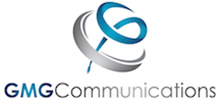There’s never a bad time to examine your company’s cybersecurity posture, and even improve your strategy. Threats abound, including security incidents resulting from weak passwords, phishing attacks, and the lack of strong authentication. Read on to learn how you can assess and improve your preparedness for security incidents–it’s not if, but when.
Preparedness Starts with Awareness
October is Cybersecurity Awareness Month. Starting in 2024 the Cybersecurity and Infrastructure Security Agency’s (CISA) theme is “Secure Your World.” Cybersecurity Awareness month is a time for understanding the threats that face all businesses, and perhaps especially small to medium-sized companies. The good news is, you can learn more about what threats affect your network, applications and data, and how to protect your business.
Protect Your Business from Common Threats
Common threats include phishing as well as the ransome ware that can infect your network and steal your data. If your data isn’t stolen, it can be encrypted away from you via a ransomware attack. Security incidents can occur as a result of weak authentication of account access (weak passwords and lack of multi-factor authentication). Mishandled operating system updates can lead to not having the latest security updates and bug fixes.
Phishing threats are growing in frequency and sophistication, and can come in through emails designed to trick recipients into giving up security credentials, which can then be used to gain access to a company’s network and data. Phishing attempts, along with variants like “smishing” (attacks via text messaging) and “vishing” (attacks by phone and voicemail) rely on fear and a sense of urgency to trick the recipient into action. Such attacks may include malicious links. Knowing how to recognize and deal with a possible phishing attack includes knowing how to report the email before deleting it, and knowing not to click links. If in doubt about the sender’s address, the recipient can point their mouse arrow at the URL to determine if the address is legitimate.
Weak authentication can also put your company’s network at risk. Security incidents can occur when a password is guessed and the attacker penetrates the network. Examining your company’s password best practices and making sure workers know the practices, can help defend against intrusion. By creating strong passwords (e.g. twelve characters, with a variety of numbers, letters and special characters) individual workers can protect the company’s network. A password management system can help generate and store passwords, and only the password to that system needs to be remembered.
Multi-factor authentication (MFA) adds an extra layer of protection. To verify identity, a one-time code or even biometric like fingerprint recognition can determine that the request to access your network is legitimate. Even if a bad actor guesses and uses a password, they can’t access the network.
Keep Current on Operating System Updates
On the company level, updating operating systems and applications can help protect your network and data. Operating system updates often include bug fixes and updated security features. Managed updates keeps them happening on schedule and compatible with your network environment.
With its “secure your world” theme, CISA’s cybersecurity awareness campaign can be a template for your company’s efforts to prepare for possible attack. For further assistance, contact your trusted technology advisor today.

